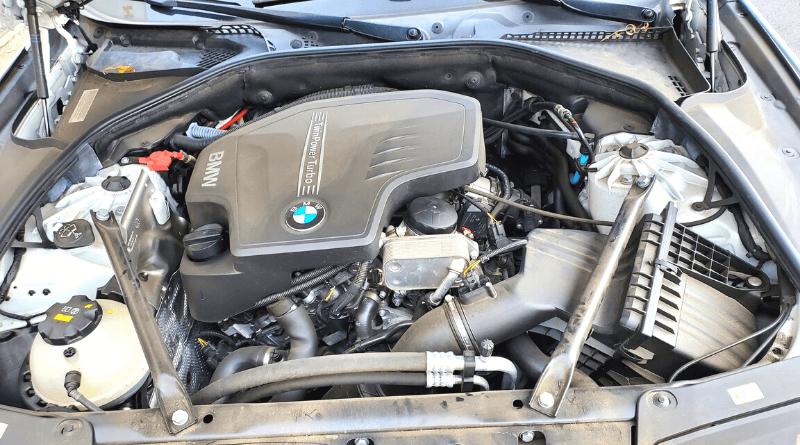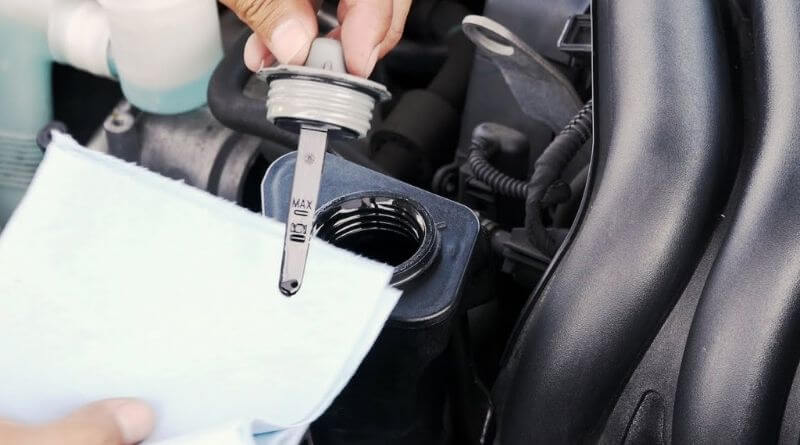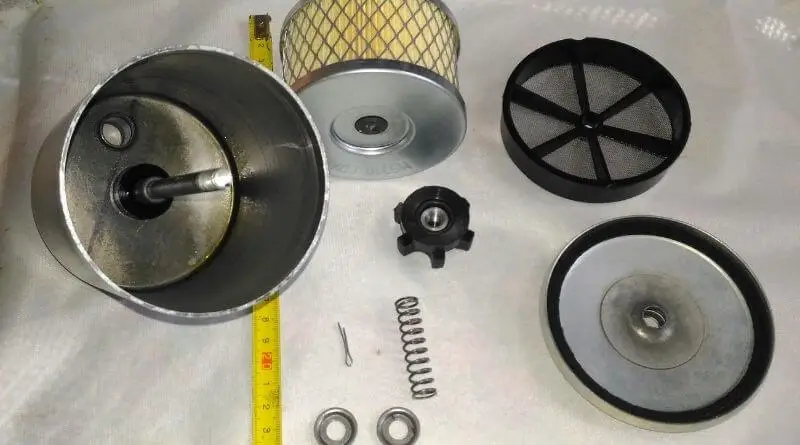Hey there! This post contains affiliate links to products. We may receive a commission for purchases made through these links. But it never influences our product selection process.
Power steering reservoir cleaning improves system performance conditions and revitalizes seals, and reduces wear and noise. All car owners should know every possible method of how to clean power steering reservoir to help the car perform long. If you regularly clean the power steering reservoir, it helps to prolong the life of the power steering component by preventing internal power steering fluid leaks.

Hydraulic fluid spilled power steering fluid on the engine and is pressured by power steering motors to increase the number of forces applied on steering wheels in a system. This fluid becomes polluted over time as internal operating systems wear and hoses break down, making it darker in color and less efficient in lubricating the mechanism.
It is not wise to clean the power steering reservoir with any cleanser or detergent in this fragile engine condition. Also, these cleaners must be strong enough to remove power steering fluid stains, especially if they have been there for a long time.
This article will discuss how to remove power steering fluid from a reservoir and how to properly clean the reservoir and handle power steering fluid leaks when the car is off and refills.
Why is my power steering fluid leaking?

Hydraulic steering fluid is pumped through hoses to the steering gear. The fluid can leak from those parts. Some steering systems incorporate coolers, which might cause leaks.
A power steering fluid leak is usually caused by worn-out seals or normal wear and tear. The colour of the power steering fluid varies widely, but it is typically red, pink, or clear. Contaminated steering fluid is typically dark or black. Insufficient fluid in a pump allows metal particles to infiltrate other steering components like the rack and gear, causing catastrophic damage.
The steering hoses can leak fluid. The high-pressure hoses might develop cracks and spilling or overfilling power steering fluid when connected to metal connections. There are also seals in the steering rack or gear that can fail, allowing fluid to leak.
You may also like: Can you fix a radiator leak with jb weld
Do you check the power steering fluid with the engine on or off?

You can check the power steering fluid level during the oil change period, but it can also be checked if you suspect any problem. After a few minutes of running the car, check this fluid. You can also check the fluid levels while the engine is turned off. Also, you might need to fix your radiator in the process as well. So, keep that in mind!
What can I use for power steering fluid?
There are three kinds of cleaning process of the power steering reservoir. Among them, degreasers and pressure washers are advisable. Below are details:
Engine Degreasing Agent:
Degreasers are one of the greatest engine cleaners. If your power steering fluid hose is leaking, you should decrease the engine. An engine degreaser will not only clean the power steering fluid but also clean the engine chambers. Few top-class degreasers are Oil Eater AOD1G35437 (liquid base), Chemical Guys CLD_201 16 (spray base) and Gunk FEB1 ( foam base).Let’s see how to the engine with degreasing agent:
- Firstly, remove any twigs or other dirt from the engine bay before cleaning it. You can use a delicate brush.
- Then cover any electrical components such as cover fuses, connectors, etc and disconnect the battery before using the degreaser. Also, cover any exposed wires and spark plugs.
- Before degreasing, run the engine for 5 minutes. Heat makes removing grease from the engine much easier.
- Then turn the engine off and apply any sort of engine degreaser, foam, spray, or liquid, but most of them act in the same way.
- Soak the degreaser for 3 to 5 minutes. Then pour the engine with water from a hose and be amazed at how new it looks.
Shampooer And Pressure Washer:
You must know how to clean power steering fluid off the engine to reduce your servicing cost. This is why pressure washers have made car washing much simpler. Continue to exert intense pressure on an engine after applying Karcher Car Wash Wax Soap. Then, it cleans the car’s washer and reservoir.
Another method is by applying some cleanser, preferably a shampoo like Adam’s Car Wash Shampoo, to the engine before using a pressure washer to remove the power steering fluid. Follow the step for doing the cleaning:
- First, turn off the engine of the car and cover the battery and wires.
- Then apply the shampoo or car wash soap to the particular place.
- After that use, stiff-toothed plastic bristled brushes to rub and remove the tuff stains.
- Keep the soap or cleaner for 5 minutes.
- Afterwards, pressurize an engine with a steady stream of water.
- Then turn the pressure washer off and let it dry.
Alcoholic Liquid:
Indeed the most stubborn stains can be removed with the help of rubbing alcohol. A few things to note about rubbing alcohol is degreasing it or washing it with water can cause it to ignite. Next, even though rubbing doesn’t react with aluminum alloys at room temperature, it can chew through wires and other electrical components.
We suggest using Bugsplatter and Chemical Guys SPI22016 rubbing alcohol to clean the engine when no other option exists. Following are the procedures:
- First, before utilizing this procedure, disconnect the battery and turn off your car.
- Then wipe your engine and clean it with a cloth or brush.
- Then take a piece of cloth and dip in some alcohol. Use only tiny amounts of this cleaning agent. Do not use rubbing alcohol directly on oil stains.
- As it evaporates quickly so rub the alcohol with a cloth to remove the reservoir.
Best way to clean power steering reservoir
Cleaning the power steering reservoir is complicated, but using a power steering fluid cleaner makes this complex process more accessible. Both Quicksilver 858075Q01 and Lucas Oil 10008 power steering cleaners are designed to work with a range of automobiles. Always check that a product is compatible with your vehicle before buying.
Another way to fully clean your car without any hassle is to use a power steering system cleaner. With this method, power steering leak repair is simple, effective, and inexpensive, allowing you to safely get back on the road.
More than that, technicians and specialists recommend seafoam power steering cleaner for rapidly and efficiently repairing automatic gearboxes, power steering, and hydraulic systems. Sea Foam Trans Tune is both safe and compatible to use.
How to clean power steering reservoir filter

An obstruction in the power steering fluid reservoir can make noise. Most of the car reservoirs have a filter at the bottom. This filter may clog with time, limiting fluid flow. After overfilling the power steering fluid system, remove the reservoir for cleaning. If you don’t know how to fix overfilled power steering fluid, click here. The cleaning procedure is below:
1. Clean reservoir with new power steering fluid or sable solvent. If you don’t have a power steering fluid on hand, you can use the alternatives about what you can use for power steering fluid.
2. Blow off the filter screen using compressed air until the clog is gone.
3. Using a flashlight, inspect the filter screen for particles.
4. Replace reservoir, following the service manual’s tightening and blending methods.
Magnefine and Cardone 20-0058F power steering filters are the most popular because they instantly attract any hard harmful ferrous particles when the fluid flows within its effective range. Also, using a oil stabilizer can do you a world of benefits to keep your power steering healthy.
How do I stop a leaky power steering fluid?
Using a power steering leak stopper is usually the quickest remedy. To stop leaks faster and permanently, Lucas 10011 Power Steering Stop Leak is the most effective. Besides, an auto mechanic can also locate the leak and repair any damaged parts.
Overflowing is one of the reasons for leaky fluid. If it’s overflowing, it must be removed before it overheats and spreads. You must be wondering how to remove excess power steering fluid? There’s nothing to worry about. It’s a simple process of using a syringe or a turkey baster. It takes a lot of time and effort, but it’s worth it.
How to clean a power steering pump
A leak could cause the power steering pump to fail. If this little leak rapidly becomes unmanageable, the pump and other sections of the power steering system may be damaged.
You can use a Lubegard 98404 solvent and then flush it with Prestone AS261. Unless you plan to disassemble and rebuild the pump, we’d suggest avoiding using solid solvents on the seals.
Frequently Asked Questions (FAQs)
Here are the most frequently requested questions about how to clean the power steering reservoir.
What happens if you overfill your power steering fluid?
It’s common for a vent to let surplus pressure out and relieve stress on the vehicle. The pressure might build up without it, and fire can occur when overfilling your power steering fluid.
Is power steering fluid flammable?
Power steering fluid is not a hazardous liquid. It is nonflammable. Even though it will burn if heated to a sufficient temperature, it is not categorized as a flammable liquid.
Where is my power steering fluid?
Heat the car first before looking for power steering fluid.
Close the hood and let it cool. This usually is recognizable by a black cover and a white or yellow reservoir located on or around the engine. Also, the owner’s manual will tell you where it is.
Final Takeaway
Squealing, rigidity, poor reaction, and grunting are all indicators of a power steering system that need to be cleaned. Routine maintenance and a clean power steering reservoir can help avoid component deterioration.
After reading this article now, we hope you can deal with no leak, safe and compatible power steering fluids.
Related Posts:
- How to wash a mustang convertible top
- Best oil filter for duramax diesel
- Schaeffer Vs Amsoil Synthetic Oil
- Is The Jeep Cherokee Frame or Unibody (Briefly Answered) - November 10, 2022
- Are Titan Wheel Spacers Good (The 360 Guidelines) - November 9, 2022
- FCW off Jeep (Is It Important for Your Car) - November 9, 2022

